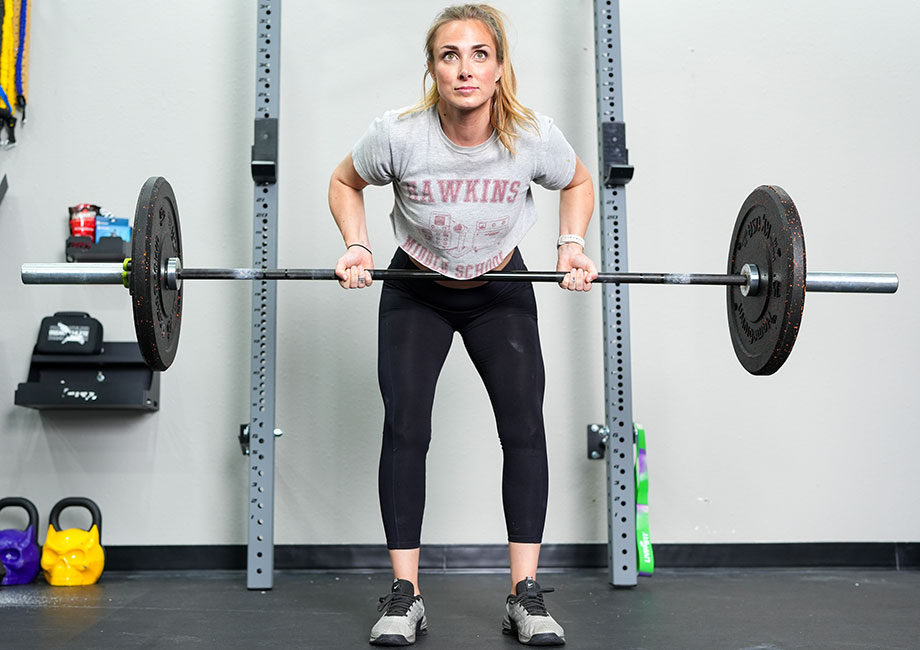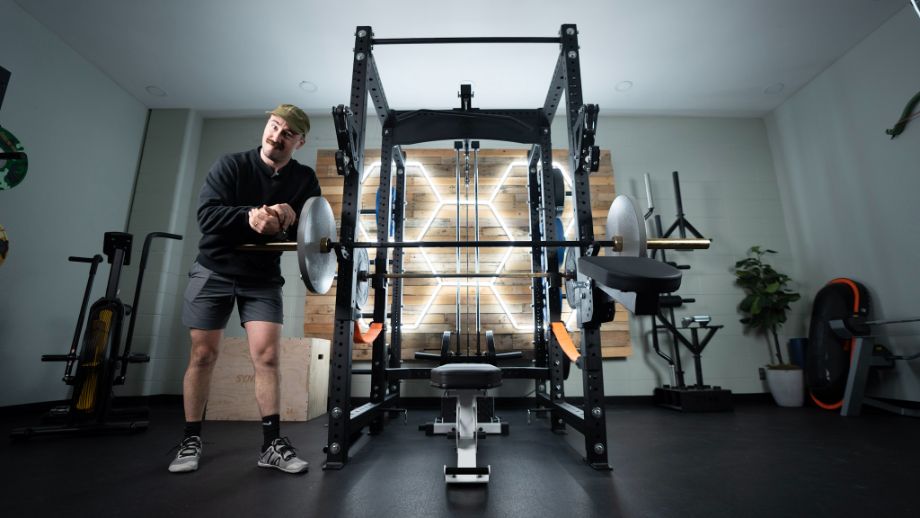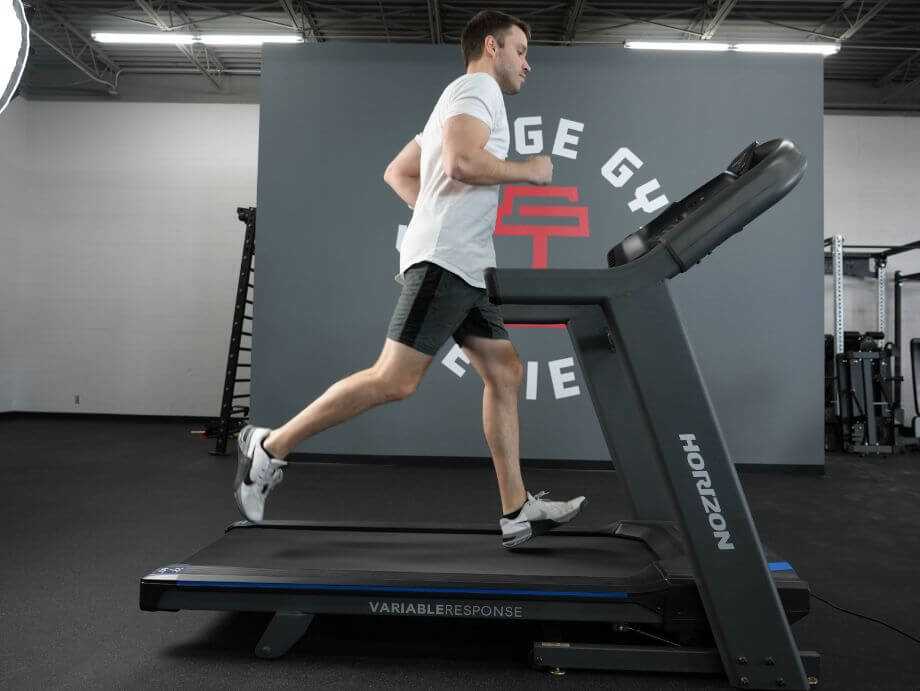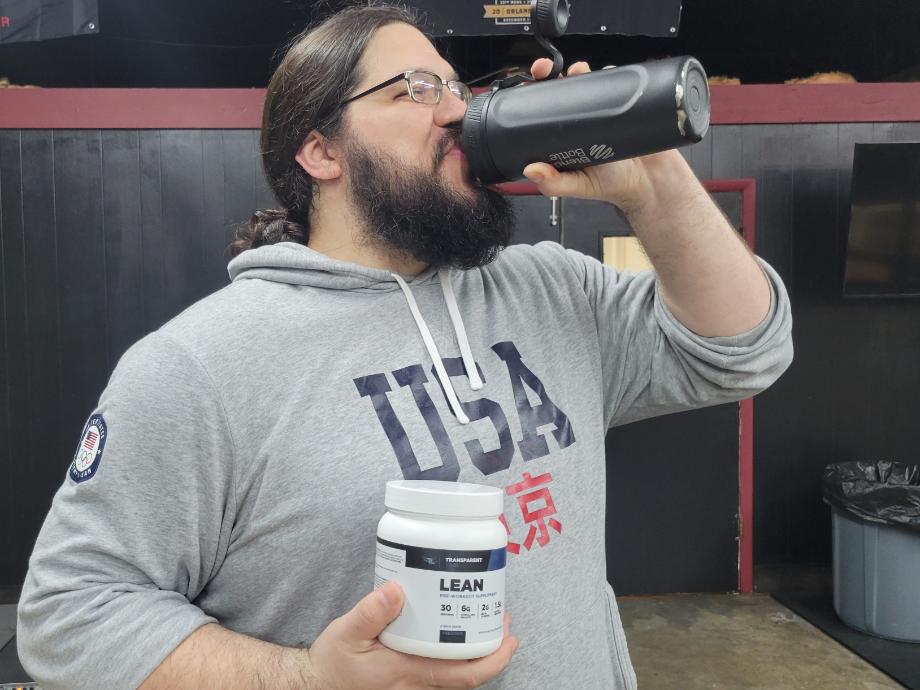Resistance training can be intimidating. As a certified personal trainer (CPT), I’d say that roughly half of my clients come to me because they’ve never done any form of weightlifting before. There’s a lot to learn, but as they say, Rome wasn’t built in a day. One of the first things I teach when showing a fitness newbie how to read workout tables—even before they learn proper form—is reps vs sets. You’ll see these in every workout plan, and doing the suggested number of reps and sets can help you achieve your training goals and prevent plateaus.
I’m here to explain what reps and sets are, the types of reps and sets, and how many of each you should be doing. Next, I’ll discuss how long your rest periods should be and the benefits of knowing about reps vs sets.
Let’s get started.
What Are Reps?
Reps (aka repetitions) are the number of times you repeat an exercise movement before resting. For example, with a barbell or dumbbell bench press, each time you bring the weight toward your upper body and press it back counts as one rep. Knowing how many reps you’re doing is important because different fitness goals require different rep schemes (I’ll expand on this below).
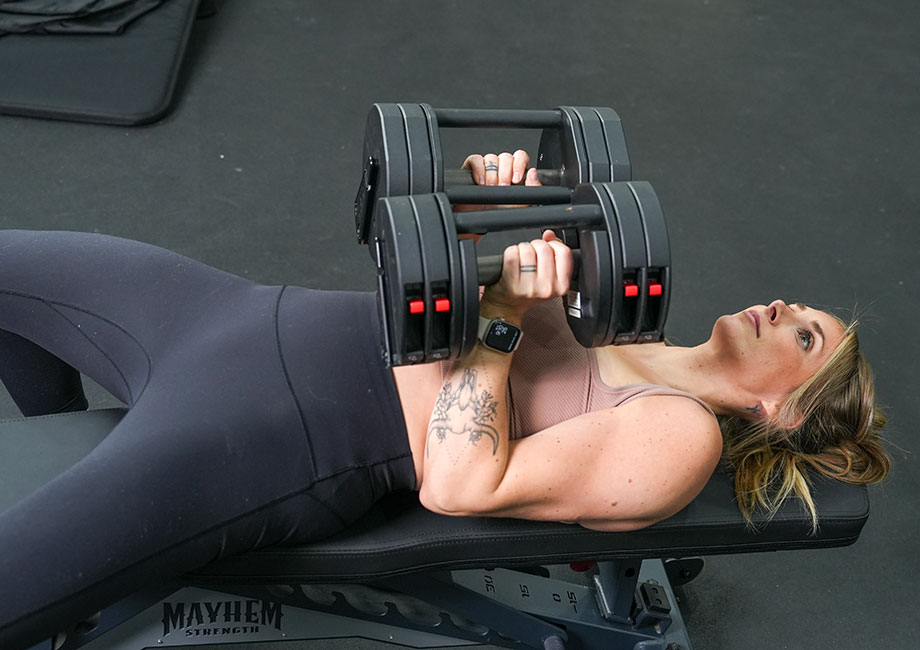
What Are Sets?
A set is the number of reps you do in a round. Let’s say you do eight reps of biceps curls and decide it’s time for a break; this is one set. You’ll rest and then do another eight reps for your second set. You’ll keep repeating these sets until you’re done with the exercise. Although you can do as little as one set per exercise, most people do between two and five, with three being the most popular.
RELATED: Workout Schedule For Beginners
Types of Sets and Reps
Now you understand the difference between reps and sets, let’s go through some common types:
Sets
- Straight sets: You’ll do predetermined numbers of sets and reps. Usually, you’ll see “3×10” or similar, which means three sets of 10 reps with a rest after each set. The weight you lift will often stay the same throughout, but it doesn’t have to.
- Supersets: Superset workouts involve performing two or more exercises one after the other with minimal rest in between. You can target one specific muscle group or a combination of different muscle groups.
- Drop sets: Instead of resting after a set, for drop set workouts, you’ll drop the weight or change the mechanics and continue into the next set. You can stop after this or continue for further sets.
- Pyramid sets: With pyramid sets, you’ll do several reps with a lighter weight on the first set. In the second set, you increase the weight and decrease the number of reps. You keep going until your sets are complete. You’ll often see pyramid sets used in power training programs.
Reps
- Tempo reps: Tempo reps are when you perform both the eccentric and concentric phases of a rep at a slower speed than usual. This helps to increase your muscles’ time under tension (TUT).
- Isometric reps: Also known as pause reps, isometric reps are when you hold the rep for a longer time. For example, with back squats, you’ll hold the bottom position for a few seconds before driving through your heels to return to the standing position.
- Training to failure: This is when you keep going for reps until you can go no further.

There are more types of sets and reps, but these are the most popular. If you’re new to weight training, you’ll want to start with straight sets and regular reps. However, once you gain some experience, add any of the above to your workout routine.
How Many Reps Should I Do?
The number of repetitions you should do depends on your fitness goals. Here’s a handy guide outlining which rep schemes to aim for:
Best Rep Range To Build Muscular Strength
To build strength, you’ll want to do between one and five reps each set1. Because you’ll be doing fewer reps, you’ll be able to lift heavier weights (between 80% and 100% of your one-rep max). This makes sense because the definition of strength is the “ability to produce maximum force against an external resistance,” or, in other words, lifting a heavy load only a few times.
- 1-5 reps per set to build muscular strength
Best Rep Range For Muscular Hypertrophy
The optimal number of reps to build muscle is between six and 12. When you lift a challenging weight in this rep range (between 60% and 80% of your one-rep max), your muscles lengthen and contract, causing microscopic damage. At rest, these damaged muscle fibers get repaired, leading to muscle growth.
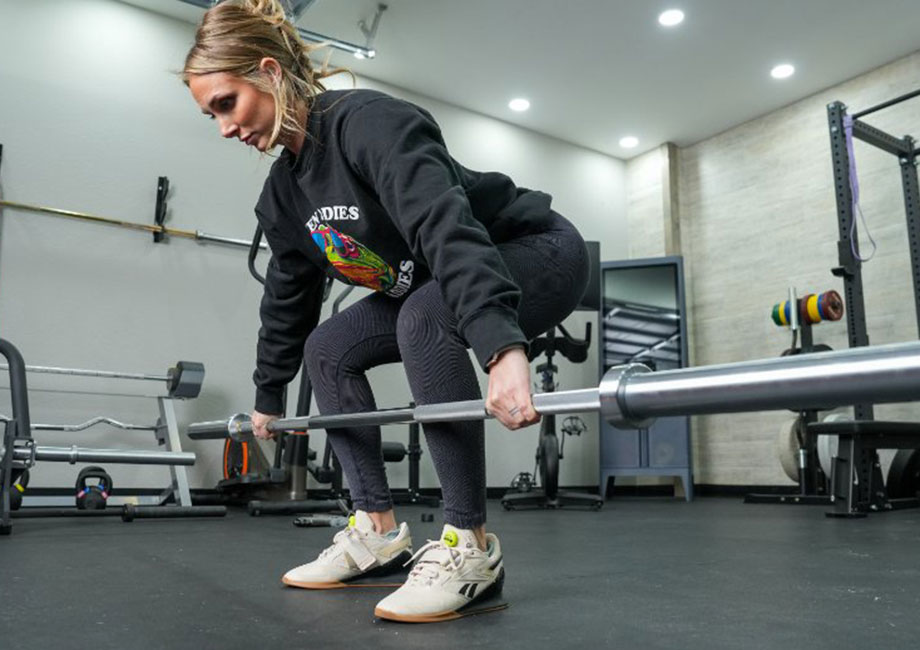
A 2021 Journal of Strength and Conditioning Research2 study found that you’re able to get a similar increase in muscle size regardless of whether you’re doing sets of four, eight, or 12 repetitions. It’s worth noting that you have to equate training volume, so the first group will have to do more total sets. So, four repetitions in each set aren’t recommended for muscular hypertrophy.
- 6-12 reps per set for muscular hypertrophy
Best Rep Range To Build Muscular Endurance
Muscular endurance is defined as “the ability to resist muscular fatigue when using a submaximal resistance.” In practice, this means doing 15+ repetitions each set1. For this, you’ll need to use lighter weights at roughly 40% to 60% of your one-rep max. You can theoretically do as many reps as you’d like, but once you get to 20 or 25, I’d suggest increasing the load.
- 15+ reps per set for muscular endurance
How Many Sets Should I Do?
Now that you understand how many reps you should do based on three different fitness goals, let’s look at how many sets you should do. Here are the best set ranges for the same goals:
Best Set Range To Build Muscular Strength
A 2020 Sports Medicine3 systematic review and meta-analysis found that a single set two to three times per week can be sufficient for powerlifters looking to improve their one-rep maximum on squats, deadlifts, and bench presses. This isn’t optimal, however, so most lifters would benefit from between two and six sets per exercise, depending on how many reps they’re doing on each set and how heavy the load is.
- 2-6 sets to build muscular strength
Best Set Range For Muscular Hypertrophy
Although the number of sets per exercise is important for muscle hypertrophy, you’ll also want to consider how many sets per muscle group per week you’ll need to do. I regularly do 15 to 20 sets on larger muscle groups, such as the chest, legs, and back, so the best set range depends on the total number of exercises you’ll perform.
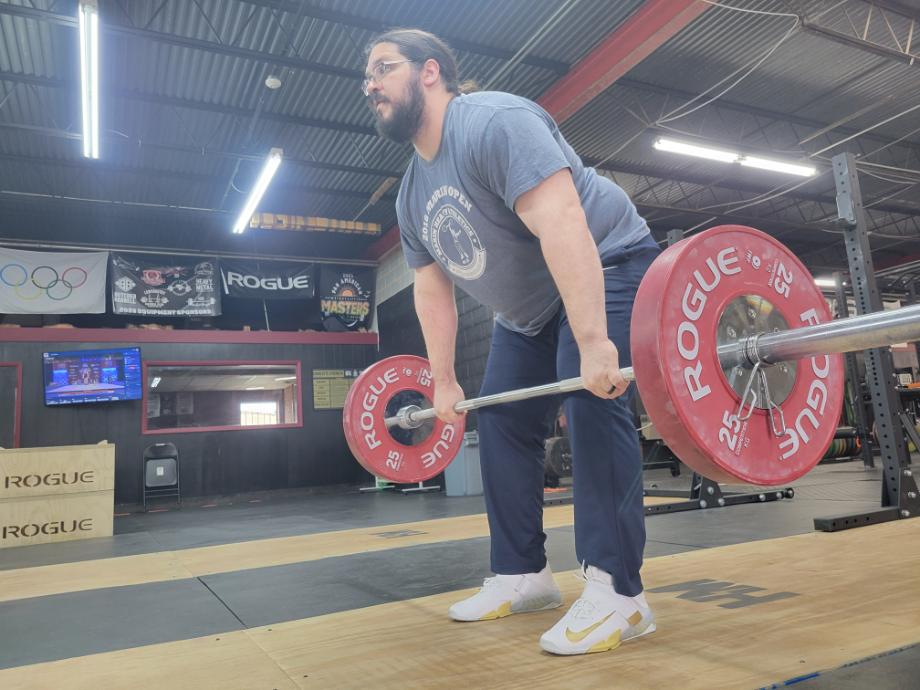
If you do fewer exercises, do more sets. For those who prefer six or seven different exercises, do fewer sets. Either way, anywhere between three and six sets per exercise is a good number to aim for.
- 3-6 sets per exercise for muscular hypertrophy
Best Set Range To Build Muscular Endurance
It’s slightly different for those wanting to improve their muscular endurance. You’ll want to limit the number of sets to two or three on each exercise because you’re doing a high number of repetitions and only resting for a short period (more on this below). This way, you can quickly move on to the next exercise, helping to build your endurance.
- 2-3 sets per exercise for muscular endurance
Note: If your goal is fat loss, you can choose any of the above three goals. However, in most cases, muscular hypertrophy is the best choice because the more muscle you have, the more calories you burn while resting or exercising. Of course, it’s important to be in a calorie deficit to achieve this goal.
What About Rest Periods?
Rest periods depend on the exercise you’re doing and your fitness goals. If your goal is muscular endurance, you’ll want to rest for a shorter period of time (between 30 and 60 seconds) because this improves your muscles’ ability to handle fatigue.
One to two minutes is the most common for those looking to build muscle. That said, I find that I need slightly longer when I’m doing lower-body exercises such as sumo deadlifts and squats.
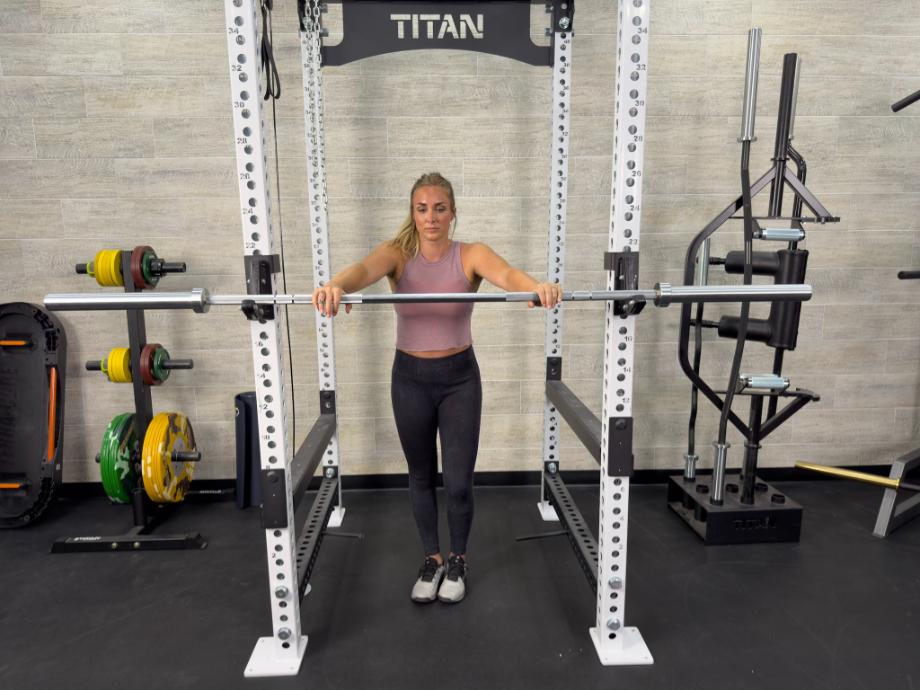
Strength training requires two to three minutes of rest periods, but you can take longer. Because you’re lifting heavy weights, replacing your adenosine triphosphate (ATP) energy stores takes longer.
Benefits of Reps Vs Sets
Why do you need to know about reps vs sets in the first place? You’re more likely to reach your fitness goals, workout plans typically involve sets and reps, and it can prevent you from (dreaded) overtraining. Allow me to elaborate:
Helps You Reach Your Fitness Goals
Powerlifters require a different number of sets and reps compared to someone who’s looking to build muscle mass. If you want to improve your muscular endurance because you’re a long-distance runner, you’ll lift a lower amount of weight because the number of reps you’ll do will be higher. Knowing the correct reps and sets to perform is key to reaching your fitness goals.
RELATED: Powerlifting Workout
Every Workout Plan Involves Sets And Reps
Whether you find a workout plan online or use one of the best online personal trainers, I can guarantee one thing—your training program will have a set and rep scheme. Getting motivated for your training session is important, but you’ll need to know what to do once you get there. As you progress, you can add variety with different types of reps and sets.
Helps Prevent You From Overtraining
In the bodybuilding world, resting is just as important as training. So, why would you want to do more than you need to? If three sets of eight reps are enough, what’s the benefit of going to five sets? There aren’t any. The correct number of reps and sets can stop you from overtraining and may even help prevent an injury.
Reps Vs Sets: Final Thoughts
Now that I’ve explained what reps and sets are, the different types, and how many you should be doing based on three different training goals. I also covered rest periods and the benefits of knowing about reps vs sets. By now, I’m confident that you understand why reps and sets are the key to reaching your fitness goals and preventing you from overtraining.
Regardless of your fitness level, warm up by doing cardio and some dynamic exercises before you do weight training. Bodyweight squats, arm swings/circles, inchworms, and push-ups are fantastic warm-up exercises. If your fitness goals change over time, this isn’t a problem—just remember to adjust your reps, sets, and rest periods accordingly.
Reps Vs Sets: FAQs
Is it better to increase reps or sets?
Increasing reps or sets depends on the number of reps and sets you’re currently doing and your individual goals. For those already performing sets within the correct rep range for their goals, increasing sets is likely the best option. However, there’s a chance that you won’t need to increase either reps or sets because you’re already doing enough of both.
How many reps for muscle growth?
For muscle growth (aka muscle hypertrophy), the optimal number of reps is between six and 12, as shown in a 2019 International Journal of Environmental Research and Public Health4 systematic review. Anything less, and you’ll be getting strength gains, and anything more is better for muscular endurance rather than muscle growth.
Which muscles respond better to high reps?
Although some believe lower weights and higher reps are better for training specific muscle groups, this is just a myth. If your goal is to increase your muscle size, aim for six to 12 reps each set, regardless of the muscle group you’re activating. The only time you need high reps is when you want to improve your muscular endurance.
Is it better to lift heavier or more reps?
It’s better to lift heavier and do low reps if your goal is to build muscular strength. For hypertrophy, it depends. Because a range of six and 12 reps for each set is optimal, the number of reps you currently perform matters. If it’s already 12, lift heavier rather than increasing the reps. However, if you’re at six, do more reps until you reach 12.
For muscular endurance, 15 reps or more each set is ideal. However, at some point, doing more reps isn’t worthwhile, so you’ll need to increase your load.
References
- Schoenfeld BJ, Grgic J, Van Every DW, Plotkin DL. Loading Recommendations for Muscle Strength, Hypertrophy, and Local Endurance: A Re-Examination of the Repetition Continuum. Sports (Basel). 2021 Feb 22;9(2):32. doi: 10.3390/sports9020032. PMID: 33671664; PMCID: PMC7927075.
- Kubo K, Ikebukuro T, Yata H. Effects of 4, 8, and 12 Repetition Maximum Resistance Training Protocols on Muscle Volume and Strength. J Strength Cond Res. 2021 Apr 1;35(4):879-885. doi: 10.1519/JSC.0000000000003575. PMID: 32304514.
- Androulakis-Korakakis P, Fisher JP, Steele J. The Minimum Effective Training Dose Required to Increase 1RM Strength in Resistance-Trained Men: A Systematic Review and Meta-Analysis. Sports Med. 2020 Apr;50(4):751-765. doi: 10.1007/s40279-019-01236-0. PMID: 31797219.
- Krzysztofik M, Wilk M, Wojdała G, Gołaś A. Maximizing Muscle Hypertrophy: A Systematic Review of Advanced Resistance Training Techniques and Methods. Int J Environ Res Public Health. 2019 Dec 4;16(24):4897. doi: 10.3390/ijerph16244897. PMID: 31817252; PMCID: PMC6950543.


